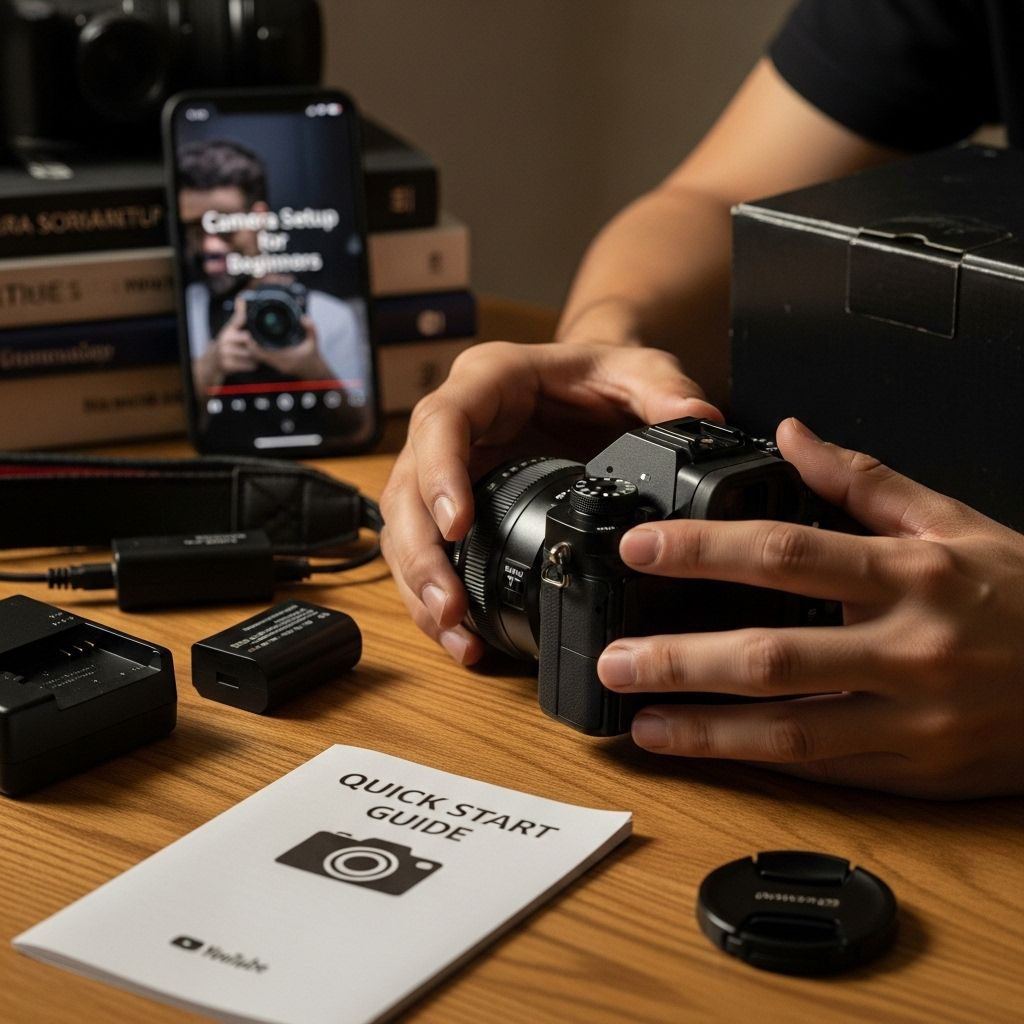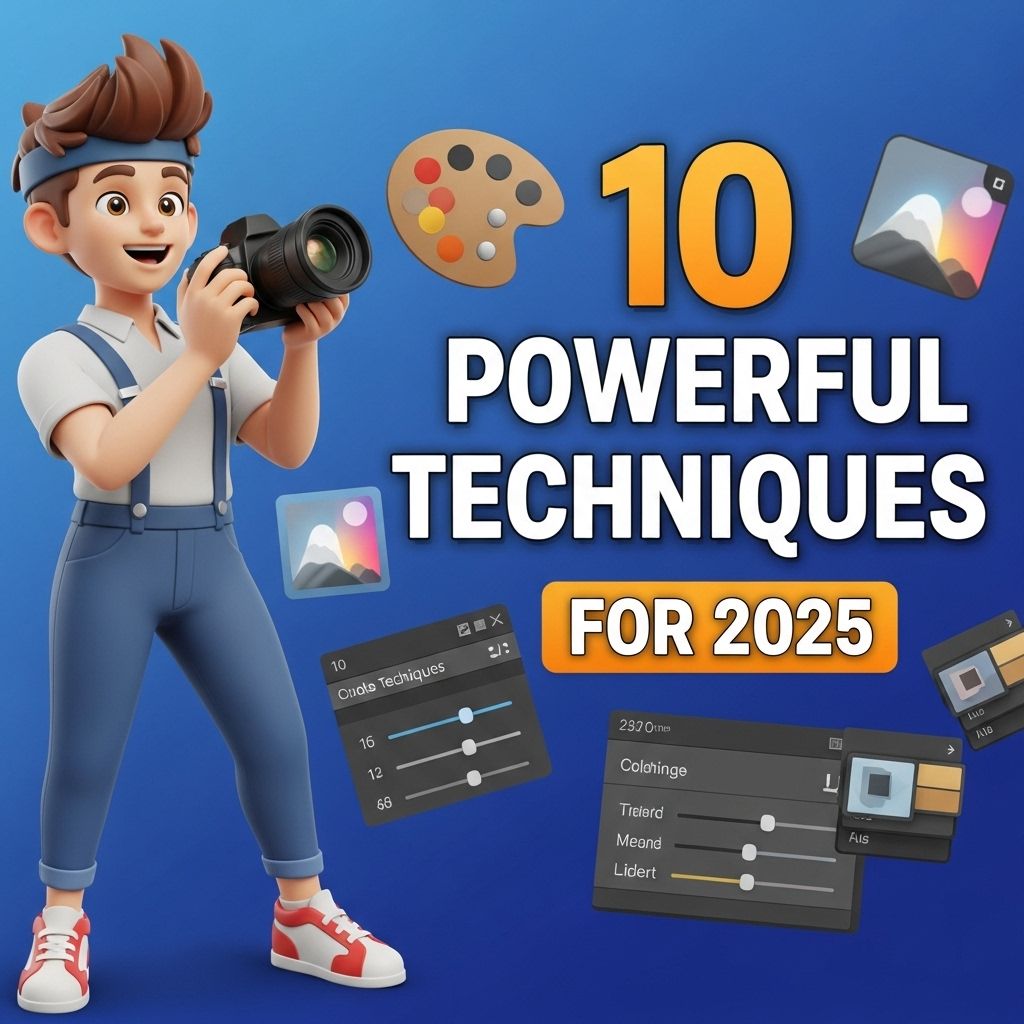Setting up your first camera can be an exhilarating experience, opening the door to a world of creativity and exploration. Whether you’re interested in photography as a hobby or considering a career in this dynamic field, understanding the basics of camera setup is crucial. This guide will take you through the essential steps and tips to start capturing stunning images right away.
Understanding Your Camera
Before diving into the setup process, it’s important to familiarize yourself with the different types of cameras available:
- DSLR Cameras: Digital Single-Lens Reflex cameras that provide an optical viewfinder and the ability to change lenses.
- Mirrorless Cameras: Compact cameras that offer interchangeable lenses with electronic viewfinders.
- Point-and-Shoot Cameras: Easy-to-use cameras with fixed lenses, ideal for beginners.
- Smartphone Cameras: High-quality cameras integrated into smartphones, perfect for on-the-go photography.
Essential Camera Setup Steps
1. Unboxing and Initial Checks
Start by carefully unpacking your camera. Here’s a checklist of items you should find:
- Camera body
- Lens
- Batteries
- Charger
- User manual
Inspect the camera for any signs of damage and make sure all items are present. Familiarize yourself with the buttons and settings on the camera body.
2. Charging the Battery
Before you can start shooting, the battery needs to be charged. Here’s how:
- Insert the battery into the charger.
- Plug the charger into an outlet.
- Wait until the charging indicator shows that the battery is fully charged.
3. Inserting the Battery and Memory Card
Once charged, it’s time to insert the battery into the camera:
- Open the battery compartment (usually found at the bottom of the camera).
- Align the battery according to the indicated polarity, and slide it in.
- Close the compartment securely.
Next, insert the memory card:
- Locate the memory card slot.
- Insert the card until you hear a click.
4. Attaching the Lens
If you have a camera with interchangeable lenses, follow these steps to attach the lens:
- Align the lens alignment marker with the corresponding marker on the camera body.
- Gently twist the lens until it clicks into place.
Configuring Camera Settings
Now that your camera is physically set up, it’s time to configure the settings:
1. Setting the Date and Time
This step is often overlooked but is essential for organizing your images:
- Access the settings menu from the camera’s display.
- Navigate to the date/time settings.
- Adjust the date and time using the directional buttons.
2. Choosing the Right Shooting Mode
Cameras typically offer various shooting modes, including:
| Mode | Description |
|---|---|
| Auto | Perfect for beginners; the camera handles everything. |
| Manual | Allows full control over settings like shutter speed and aperture. |
| Aperture Priority | Control the aperture while the camera sets the shutter speed. |
| Shutter Priority | Control the shutter speed while the camera sets the aperture. |
3. Setting Image Quality and Format
Choose the image quality settings based on your needs:
- JPEG: Smaller file size, great for sharing.
- RAW: Larger file size, retains more image data for editing.
Exploring Camera Features
Take some time to explore the various features and settings available on your camera:
1. Autofocus Modes
Familiarize yourself with the autofocus settings:
- Single Autofocus (AF-S): Best for stationary subjects.
- Continuous Autofocus (AF-C): Ideal for moving subjects.
2. White Balance Settings
Setting the correct white balance is crucial for color accuracy:
- Auto White Balance: Automatically adjusts based on lighting.
- Custom White Balance: Allows manual adjustments for specific lighting conditions.
3. Exposure Compensation
This feature allows you to adjust the exposure for brighter or darker images:
- Find the exposure compensation button.
- Adjust the dial to increase or decrease exposure.
Taking Your First Photos
With your setup complete, it’s time to start shooting. Here are some tips for taking great photographs:
1. Understand Composition
Good composition is key to creating stunning images. Remember the following principles:
- Rule of thirds: Divide the frame into thirds, and place the subject along these lines.
- Leading lines: Use natural lines in the scene to guide the viewer’s eye.
2. Experiment with Light
Lighting can dramatically affect your photographs:
- Golden hour: Shoot during sunrise or sunset for soft, warm light.
- Explore shadows: Use light and shadow to add depth and interest.
3. Practice, Practice, Practice
The best way to improve your skills is to keep practicing. Try different subjects, light conditions, and compositions to find your unique style.
Final Thoughts
Setting up your first camera is just the beginning of your photographic journey. As you grow more comfortable with your equipment and explore different techniques, your ability to capture compelling images will flourish. Remember, the most important part is to enjoy the process and keep experimenting. Happy shooting!
FAQ
What are the basic steps to set up my first camera?
To set up your first camera, start by charging the battery, inserting it into the camera, and then inserting the memory card. Next, turn on the camera and adjust the settings such as date, time, and language.
How do I choose the right lens for my camera?
Choosing the right lens depends on your photography style. For landscapes, a wide-angle lens is ideal, while a prime lens is great for portraits. Consider the focal length and aperture for your needs.
What settings should I adjust for outdoor photography?
For outdoor photography, adjust your ISO to a low setting (100-200), use a wider aperture for better depth of field, and set the shutter speed according to the lighting conditions to avoid motion blur.
How can I learn to use my camera effectively?
To learn to use your camera effectively, read the user manual, take online courses, or join photography workshops. Practice regularly and experiment with different settings to improve your skills.
What accessories do I need for my first camera?
Essential accessories for your first camera include a sturdy tripod, extra batteries, a lens cleaning kit, and a camera bag for protection and portability.
How do I maintain my camera for longevity?
To maintain your camera, keep it clean, avoid exposure to extreme temperatures, store it in a dry place, and regularly check for firmware updates to ensure optimal performance.




